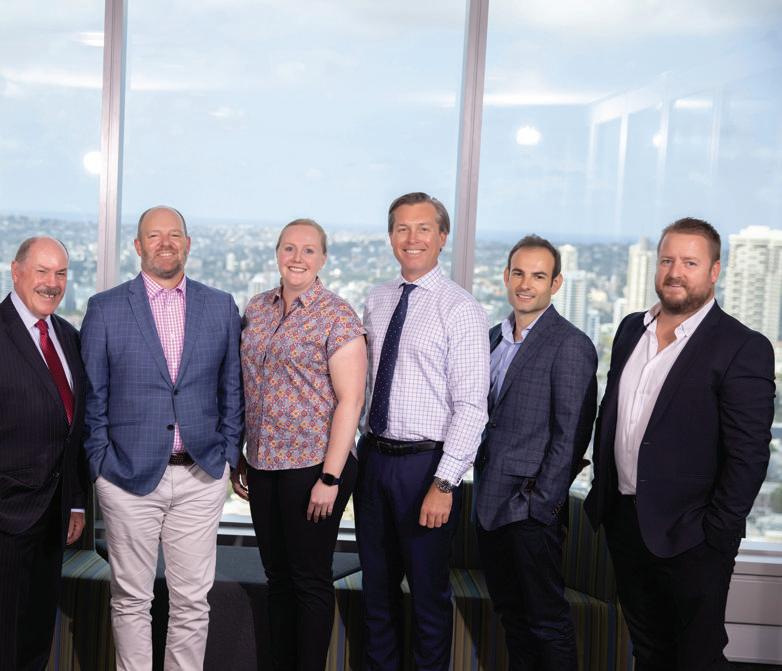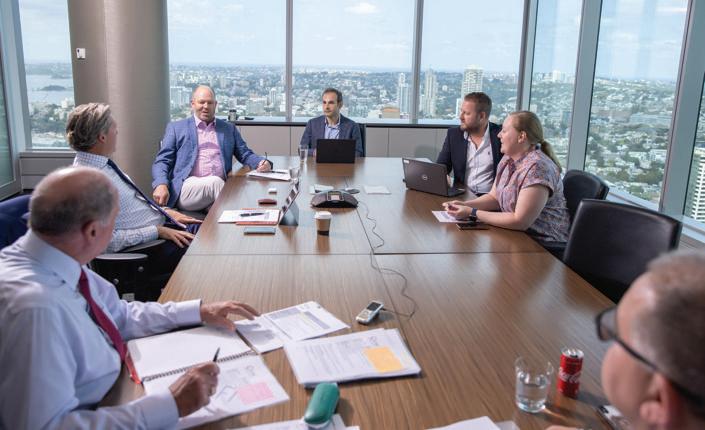
8 minute read
CONTENTS
Enabling a more relational environment
As the effects of the pandemic begin to subside in Australia, the Underwriting Agencies Council finds itself at a crossroads. What will good advocacy for the industry look like in the years to come? UAC leaders William Legge and Kurt Nilsen share their thoughts
FOR WILLIAM LEGGE, general manager of the Underwriting Agencies Council, last year was an interesting one, to say the least. UAC was coming off a bumper 2019, and the mood heading into 2020 was celebratory. But then the pandemic began to take its toll on the world, and the Australian insurance landscape underwent something of a shift. It made for challenging times in subsequent months, Legge says – but he’s swift to point out that COVID-19 wasn’t the only factor at play.
Legge is remarkably positive as he discusses the vagaries of 2020. While he doesn’t want to minimise the seriousness of the global situation, he does believe that the various rigours of the year have helped rekindle something of the communal feel in the insurance industry.
It’s a situation Legge has been living directly over the last 12 months, as UAC has consistently had more people outside the insurance industry reaching out to the organisation directly than ever before, from private individuals to business owners who are looking for help. And though the approach may be unorthodox and somewhat unexpected, Legge is embracing it wholeheartedly.
Coupled with this, Legge notes, is a diminution of expertise within the insurance market over the last few years.
“COVID definitely meant that some people retired earlier than they might have planned, but we’ve also seen other industries poaching from underwriting companies,” he says.
The upside to this situation, Legge adds, is that it allows UAC to come into its own and offer its members’ services to brokers and the public alike. Over the last few years, UAC’s membership base has expanded drastically, giving the organisation an extensive pool of insurance professionals to draw on – meaning that practical help can be provided, often very rapidly. It’s shifting the focus of the industry back to where it should be: the people who are insured and their insurance brokers.
“I think the transition from rapid phone
Left to right: UAC board members Kurt Nilsen, William Legge, Anthony Porter, Emily Walker, Heath Amber, Eric Lowenstein and Trent Brown

William Legge, Underwriting Agencies Council
calls to more extended video discussions has largely been positive,” Legge says. “It forces you to focus properly on the people you’re speaking with, and it’s been remarkable how the format has sometimes enabled that better than travelling for face-to-face meetings.” A shift in distribution UAC chair Kurt Nilsen believes this is a natural outgrowth of other trends within the broader insurance industry. Boutique firms have taken on an increasing prominence as many of the major insurance companies begin to grow more conservative.
“Over the last couple of years, we’ve seen a lot of new agencies entering the market,” Nilsen says. “We’re in a situation within the overall industry where middle management hold a lot of the expertise, naturally enough, and some of them are starting to wonder how things could be done better. So they’re striking out and establishing their own agencies.”
Both Legge and Nilsen see this development as crucial, particularly because the belt-tightening around the market over the last few years has seen many larger insurers shift their focus to become more cost-effective and, in turn, step away almost entirely from certain sectors.
“We’re seeing a change in distribution, certainly,” Nilsen says. “Some of these newer
agencies are significantly nimbler, as they’re not dealing with the legacy administrative systems and are able to be a little more techsavvy. It’s akin to a cruise ship sailing alongside a 40-foot pleasurecraft – they’re both heading for the same destination, but one is far more manoeuvrable than the other.”
At these agencies, the decision-maker is often the underwriter, which can present a distinct advantage from both a broker and consumer standpoint, Nilsen notes.
“As a broker or direct consumer, when you’re dealing with these boutique agencies, you’re often speaking to the actual person who will make the final decision on whether to cover the risk or not,” he says. “They have the skill set behind them, so they can make the call as to whether or not they can cover or how needs can be met in the middle.”
Both men agree that this marks a resurgence of the relational aspect of the insurance industry. “Data is always going to drive the carrier, because at the end of the day, it’s data that has given them the capability to put prices on things,” Legge says. “But the endpoint is always going to be relational and personal.”
Looking forward Off the back of this shift, Legge expects to see several developments over the next few years.
“First of all, insurtech is going to become even more important – it’s a key way for businesses to maintain their relevance and keep ahead of the competition,” he says. “Secondly, this attitude isn’t going to go unnoticed by the major players, either. There will be more M&A activity in the industry, which will be good from an equity financing perspective. What we need to ensure is that these companies are able to keep the qualities that made them so attractive to brokers and clients in the first place.”
It’s a multifaceted question, Nilsen adds. “Obviously, a great deal of M&A activity is driven by capacity; in other cases, it’s a case of specifically acquiring talent. Either way, I think we’ll see multiple smaller providers scaling up through mergers or trade associations.”
Given the changing climate around
new talent” Kurt Nilsen, Underwriting Agencies Council


COVID-19, Legge and Nilsen are both hoping for a return to relative normalcy for the rest of 2021. Public events were largely unable to be held during 2020, but UAC now has an exhibition planned for every state capital in 2021 – and likely some regional events, too.
Legge points to the growth of imitators within the field as a sign of UAC’s success. “We’re seeing other groups starting to adopt our expo model, so we like to think that’s a sign of flattery,” he says. “It usually means that you’re doing something right.”
Nilsen is also pushing for more educational seminars where possible. “We obviously want to keep people up to date on best practice and to drive better innovations,” he says. “If we’re seeing a shift to things being more relational than they have in a long time, I think it’s a really great opportunity for all of us.”
Legge echoes that sentiment. “We’ve got seven or eight major regulatory changes coming up in 2021. We need to be leading the conversation in this space and ensure that our members are at the forefront of best practice.”
Nilsen also has grand ambitions for the industry as a whole. He wants to see insurance positioned as a career of choice for up-andcoming professionals.
One of the roadblocks, Nilsen believes, is overcoming popular misconceptions from previous decades.
“If you look back at the ’70s or ’80s, insurers tended to be seen as these door-to-door salespeople who were turning up to offer you something you didn’t want,” he explains. “Obviously we’ve come a long way since then – the industry is much more professionalised and regulated these days. But there’s still work to be done as a collective. We need to be looking at ways that we can recruit more actively and attract new talent.”
Legge agrees. The need for underwriting skills is greater than it’s ever been, and he’s eager to see the next generation establish itself as a dominant force that can both aid and improve the industry.







